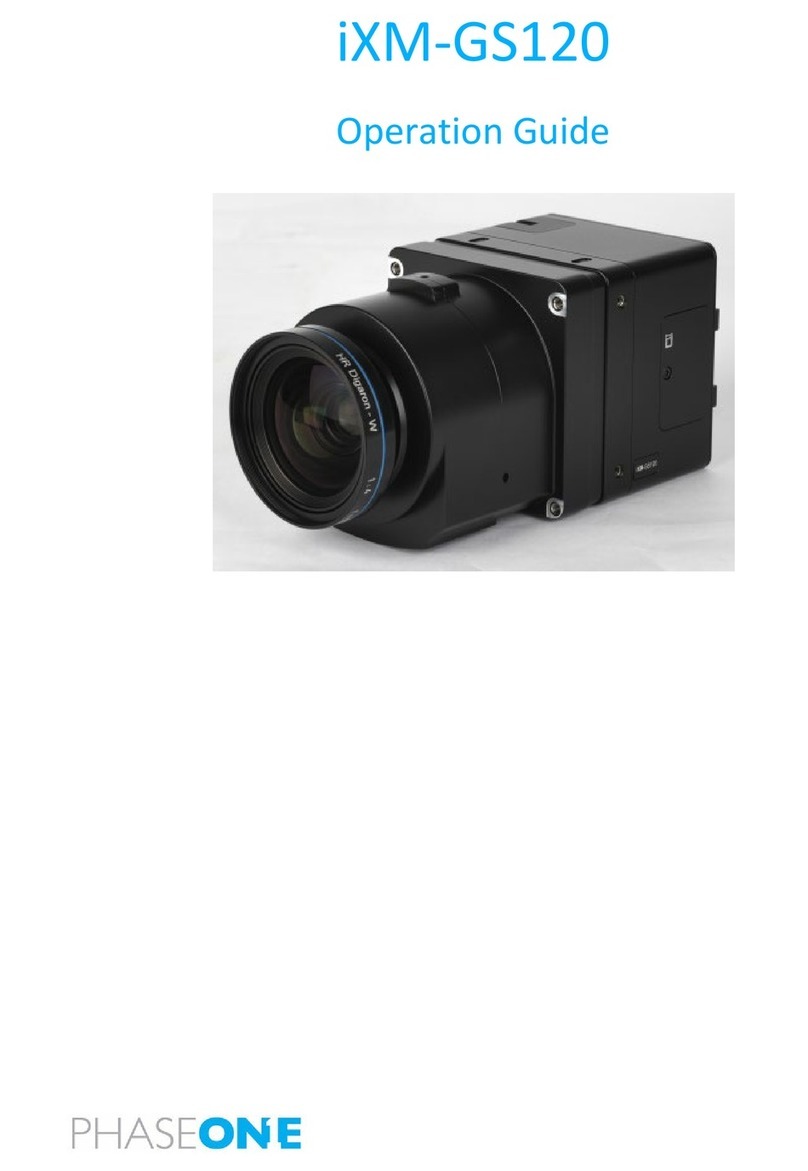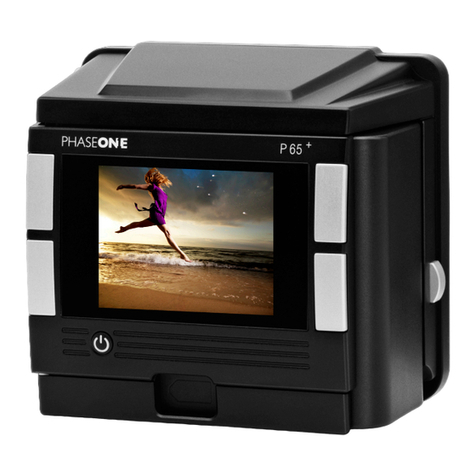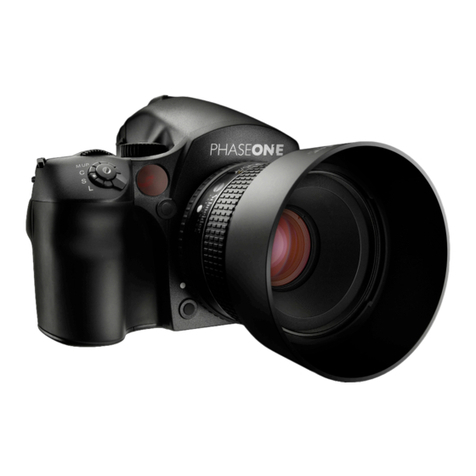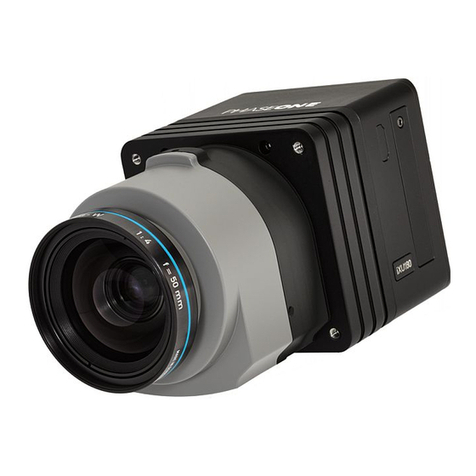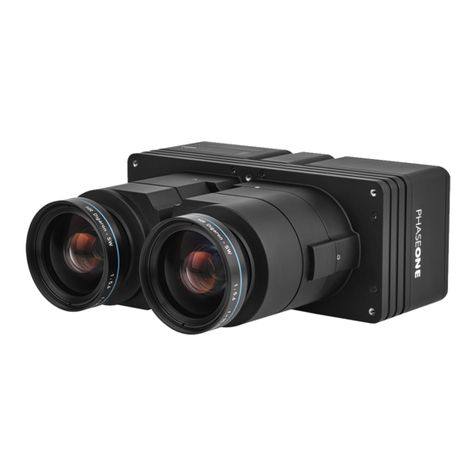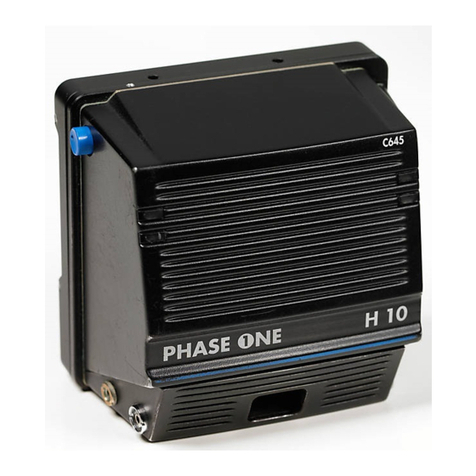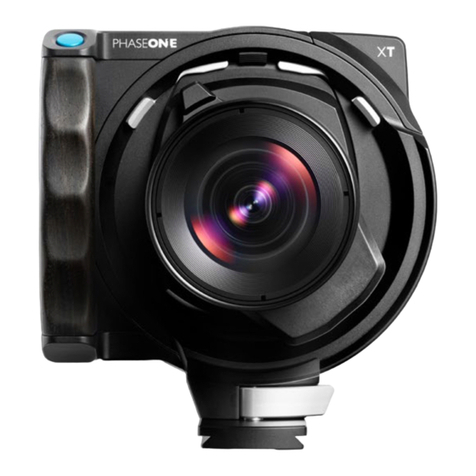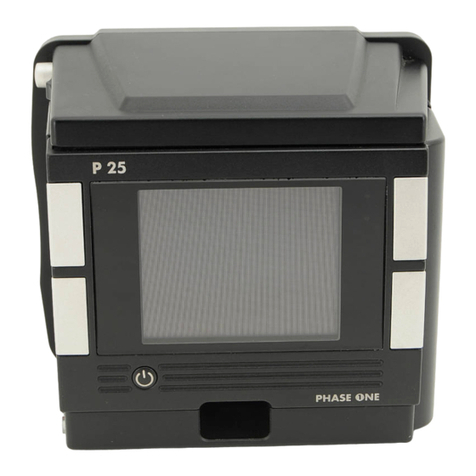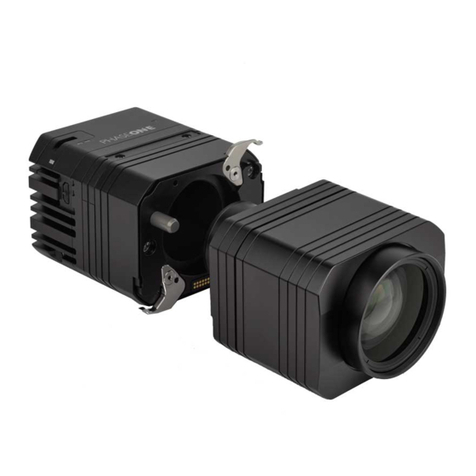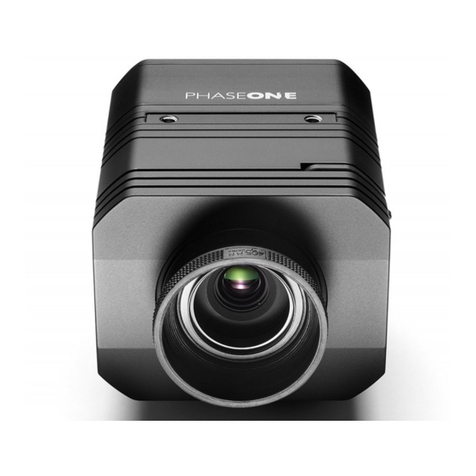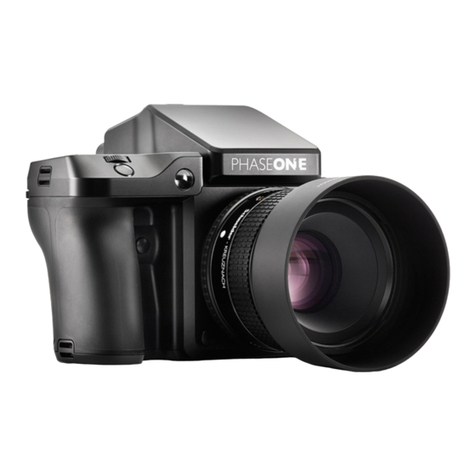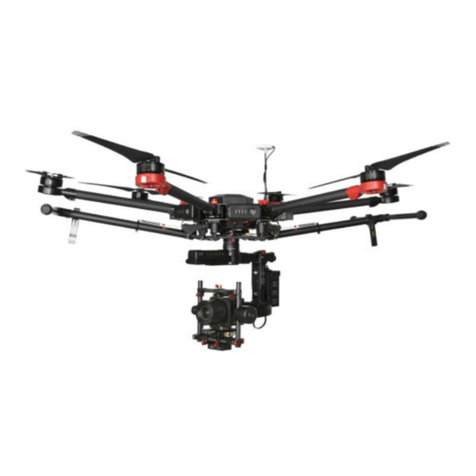2Table of ContentsXF IQ4 Camera System Manual |
Primary parts of the XF IQ4 Camera System 4
Lens, XF Camera Body, IQ4 4
Dials, Buttons and Touch Screen Interface 6
XF Camera Body 6
Top Touch Screen, Dials and Keys 7
Assembling the XF IQ4 Camera System 8
Digital Back and Camera Body Modularity 8
Attaching the IQ4 to the XF Camera Body 8
Attaching a lens 9
Interchangeable Viewfinders 9
Readying the camera system 10
Charging the batteries 10
Charging a device by USB 10
Loading and removing the batteries 12
Setting Date, Time and Language 13
Security Code Protection 13
Ready for Capture Beep 13
Installing an XQD card 14
Installing a SD card 14
Removing an XQD card 14
Removing a SD card 14
Selecting cards for storage 14
Navigating the XF Camera System 16
Top Touch Screen 16
Three dials and two keys 16
Camera menu 16
User configurable buttons 16
XF Camera Body Controls 17
Customizing buttons and dials 20
Changing the function of a dial or button 20
OneTouch User Interface Flow Diagram 22
XF Camera Menu Overview 22
OneTouch User Interface Overview 24
XF Camera Body Navigation 24
Dials 24
Top Touch Screen Operation 24
User Control Buttons 24
Front and Rear Keys 24
Top Touch Screen Layout 25
Auto Functions on Shutter Speed, Aperture and ISO 26
XF Tools on the Top Touch Screen 27
HDR Tool 27
Timelapse Tool 28
Focus Stack Tool 28
Hyperfocal Tool 29
Focus Trim Tool 30
Profoto Remote Tool 31
Seismograph Monitor 31
BullsEye Level Tool 31
Flash Analysis Tool 32
Vibration Analysis Tool 32
Capture Analysis Popup 32
IQ4 Navigation 33
Touch Screen Operation 33
Accessing Tools, Settings and Status 33
Using the Shortcuts Menu 34
Using the Status Bar 34
Status Menu 35
Camera Controls 35
Live View 35
Changing settings in Tools 36
Four Key Navigation 36
Viewing Images 37
Viewing single Images 37
Delete a single image 37
Rating an image 37
Displaying a Histogram 37
Image Info 38
Exposure Masks 38
Exposure Zone 38
Setting a Custom White Balance 39
Viewing Images as thumbnails 39
Deleting multiple images 40
Browser Image Info 40
Browser Exposure Masks 40
Camera Controls 41
Selecting the Exposure Program 42
Setting the White Balance 42
XF Camera settings 42
XF Capture Modes 42
Using Autofocus and capturing an image 43
Virtual Horizon Tool 43
Automatic Frame Averaging 44
Using Automatic Frame Averaging 44
Tools Viewer 46
Using the Tools Viewer 46
Histogram 47
Exposure and Clip Warning 47
Exposure Zone 48
Displaying a Grid 48
Live View 49
Activating Live View 49
Adjusting Exposure Settings 49
Exposure Simulation 50
Using the Exposure Adjustment Aids 50
Live RGB and RAW Histograms 50
Live RAW Clip Warning 50
Using Auto Gain for Automatic Brightness 51
Displaying a Grid 52
Setting a Custom White Balance 52
Virtual Horizon Tool 53
Live View Auto Pause 53
Set Preview Zoom Level 53
Live View over HDMI 54
Connecting HDMI 54
Enabling HDMI Output 54
Display Histograms and Clip Warning 54
Display Focus Peaking 54
Showing the IQ4 UI over HDMI 55
Security Settings 56
Changing Security Level 56
Locking the IQ4 56
Creating a new Security Code 57
Recovering a locked IQ4 57
Tethering Access Code 57
File formats 58
RAW file formats 58
Fast, prerecorded Black Reference Frame 59
Enter your Copyright information 59
Capture One Inside Styles 60
Content | XF IQ4 Camera System Manual
Jump to
Table of Contents

